Until November of last year, Trofa was the only municipality in Portugal without a town hall. Though it lies on an ancient route that dates back to the Roman Empire, the small industrial center only gained administrative autonomy in 1998. Since then, some civic functions were carried out in a renovated residential building and most others scattered to sites throughout the city. “It was a joke,” says architect José Carlos Nunes de Oliveira, whose firm NOARQ was awarded the design of the Câmara Municipal da Trofa in a 2016 competition.
The new building, financed in part with funding from the European Union, concentrates for the first time the city’s public offices and administrative spaces in a central location, off a major avenue and steps from a historic chapel and park. Presented with a rectangular site that contained the abandoned buildings of a former grain-processing facility, NOARQ chose to preserve a warehouse at the center of the plot, extending its roof toward the southern end of the site, and nestling it within five new volumes clad by slender black brick.
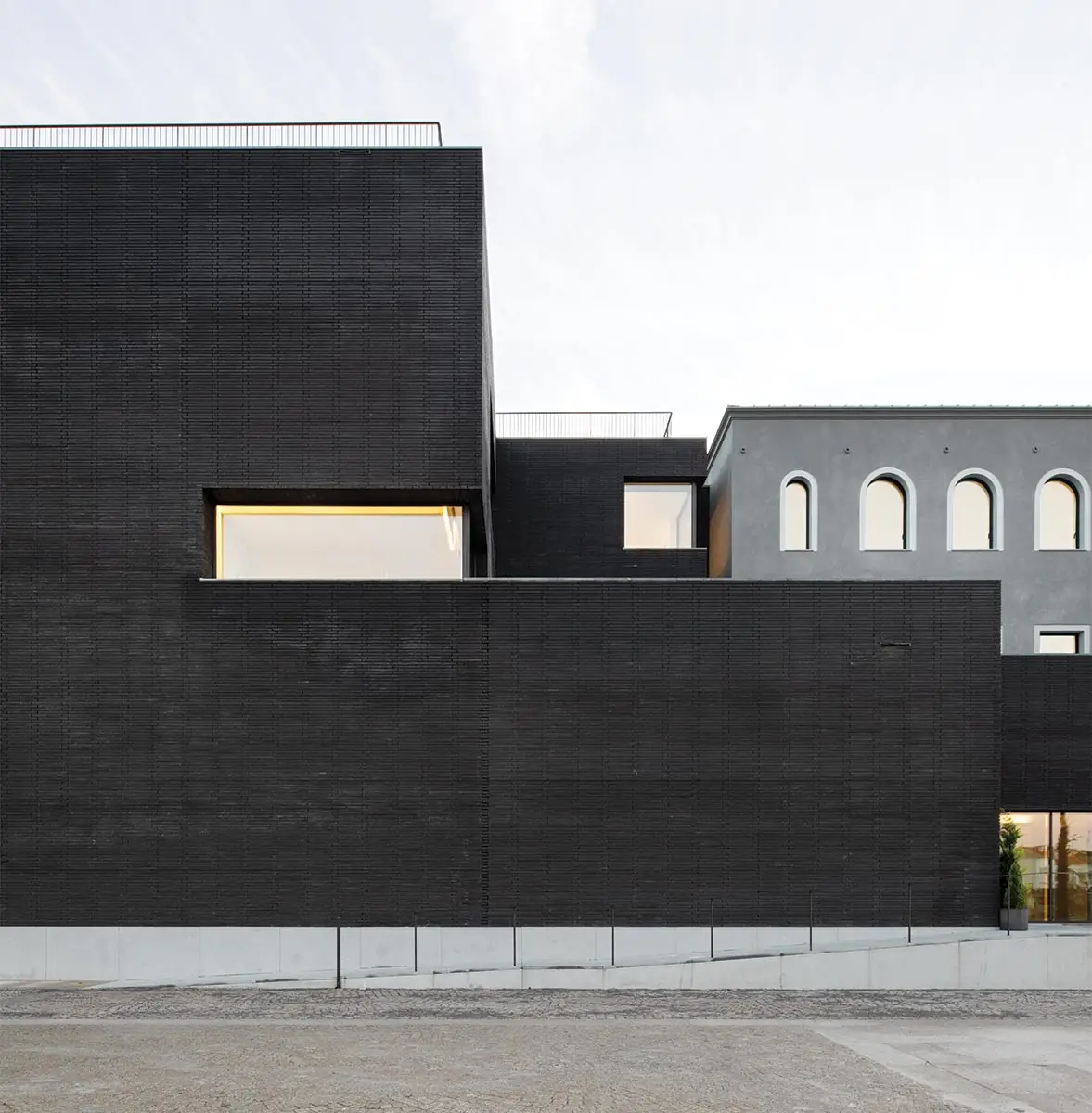
1
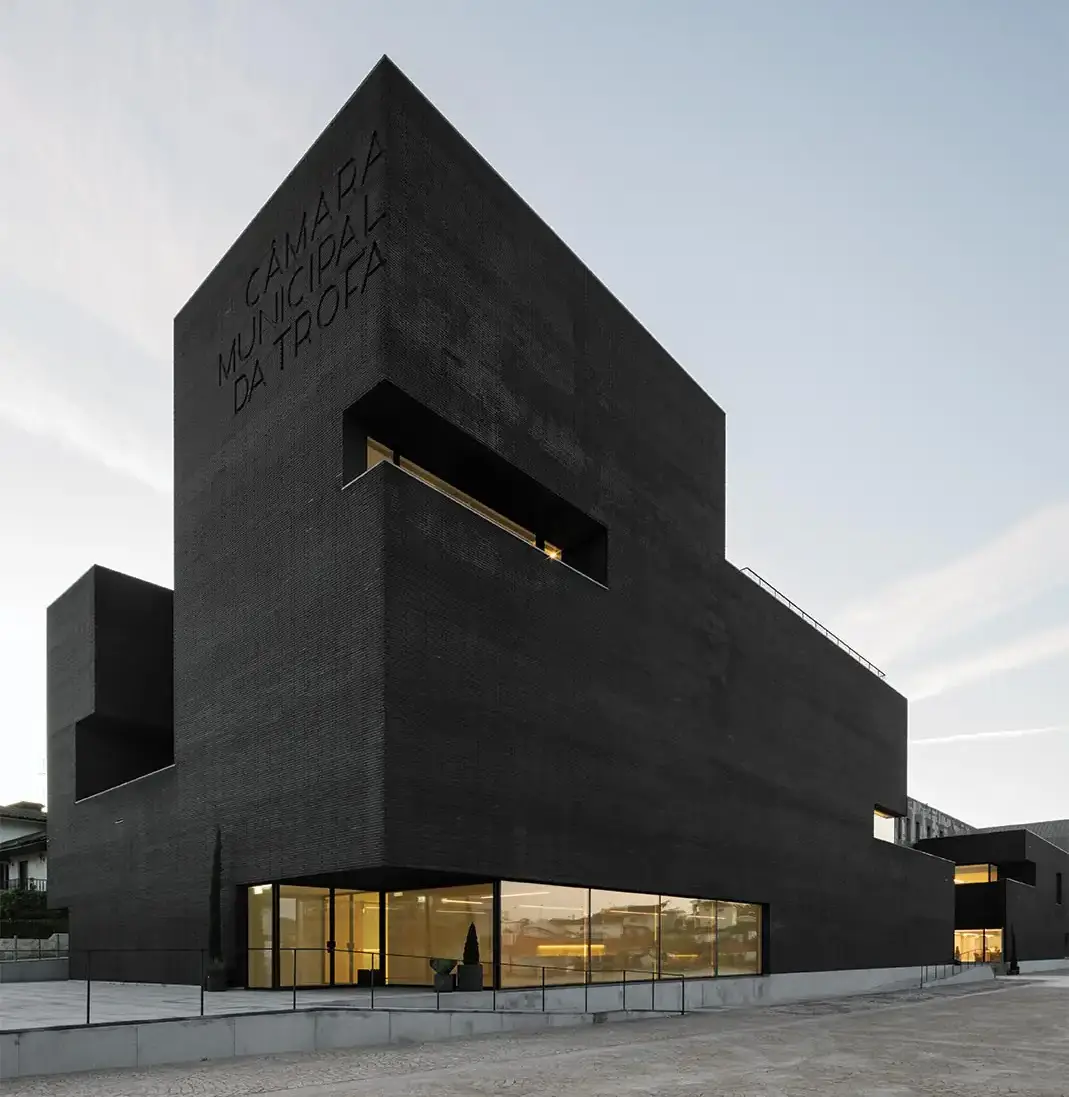
2
A restored industrial building (1) is at the core of the new town hall (2) and backdrops a terrace on the second level (3). Photos © Attilio Fiumarella, click to enlarge.
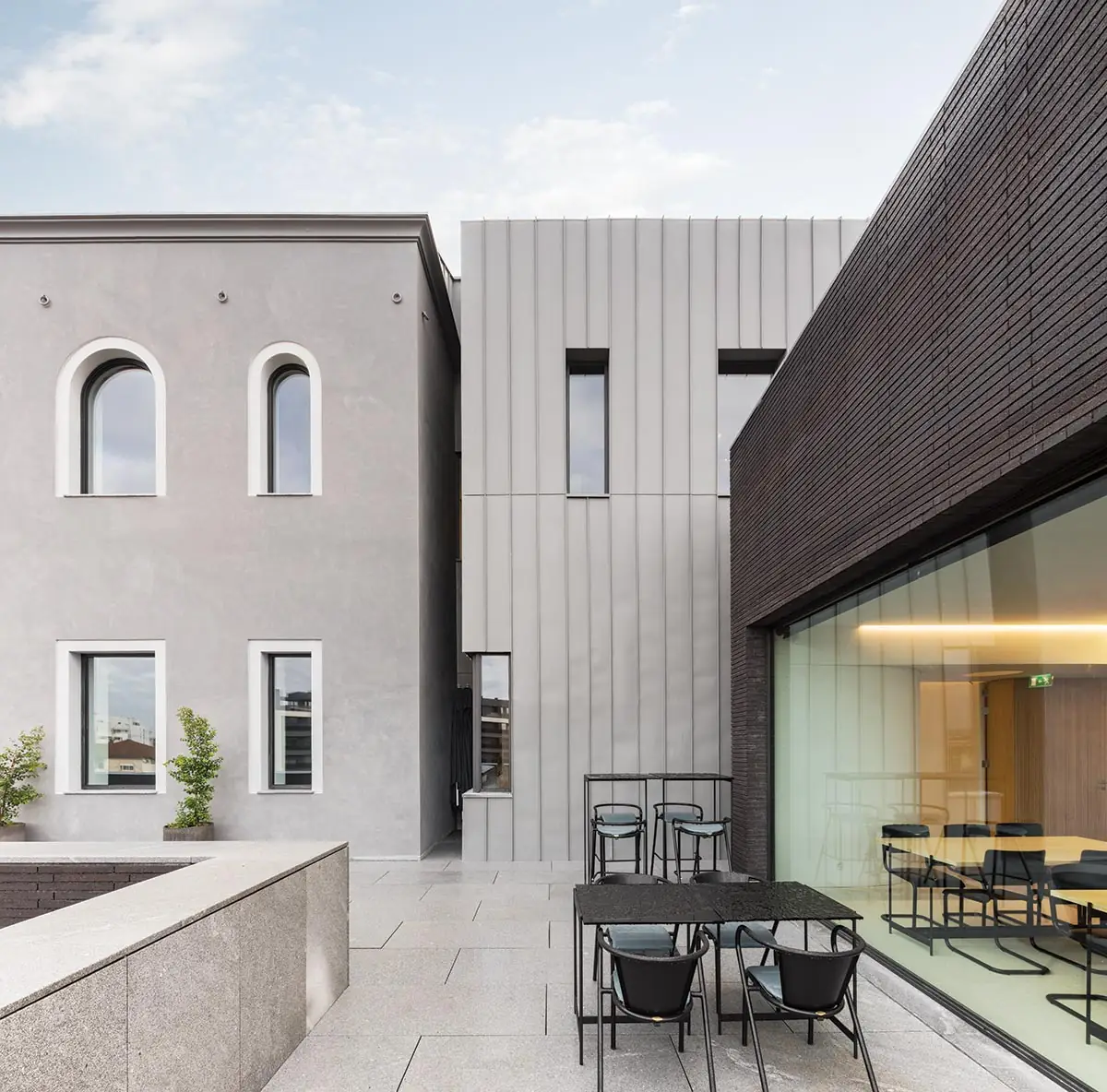
3
The firm’s striking choice of exterior is a nod to the historical lineage of Trofa, whose buildings were once blackened by coal smoke from the busy rail lines to which it owes its development. Trofa is relatively young by European standards—its railway station was inaugurated in 1875 and, soon after, food processing, milling, metalworking, and textile industries settled there to take advantage of easy distribution to the larger cities of Porto and Braga to the south and north, and eventually to Guimarães to the east. Today, about 40,000 people live and work in the city, which has maintained its industrial and manufacturing heritage. A bevy of Trofense factories produce goods such as tires and automotive parts, hydraulic equipment and tools, Styrofoam, and plastic bags.
NOARQ’s building is somewhat of a behemoth, belying its provincial context; at 67,000 square feet, the design tripled the area of the original brief, which, de Oliveira said, lacked appropriate space for the public. Evocative of a train-car itself, the long and narrow structure’s somber facade and limited exterior glazing seemingly puts it at odds with many other civic architectural models of our era, which emphasize openness and transparency. But this is not a contradiction in terms: NOARQ’s concept evokes the mundane nobility of civic service, recalling “a worker in a black suit” rather than idealized and lofty aspirations of governance. “Brick is not just a covering—it is integral and ancestral,” says de Oliveira. “We chose this magnificent handmade black solid brick, which corresponded to the solidity of the image that a political building should emanate.”
Though at first glance the building is somewhat forebidding, a closer look uncovers details that pleasantly complicate its formal expression. Subtle curves are tucked in among the blocky masses, and the almost seamless exterior brick gives way in the middle of the building’s length to reveal the light gray facade of the renovated factory building, which houses the public entrance.
“Architecture is about a composition between the dark and the light,” says de Oliveira, who relocated NOARQ to Trofa from Porto almost 10 years ago. He founded his firm in 1998 and has been a longtime collaborator of Álvaro Siza; working on the design team for several of the Portuguese Pritzker laureate’s projects since 2000, including a club house in Vidago, Portugal (2010) and the Abade Pedrosa Municipal Museum in Santo Tirso, Portugal (2016). The influence of Siza’s so-called “poetic modernism” is apparent in NOARQ’s largely residential portfolio and on the Trofa project in particular, for which de Oliveira also references Alvar Aalto’s 1949 Säynätsalo Town Hall, similarly brick-clad, as a defining precedent.
The lesson in contrast continues inside, which is outfitted in warm light wood and bare concrete, at moments as striking in its brightness as the exterior is in its darkness. According to de Oliveira, the firm works in “the Vitruvian tradition,” selecting the elemental materials of brick, wood, and stone for their “honesty” as well as their durability and low maintenance needs. Because it is a civic project, function and longevity were of foremost concern in the design: “We wanted an austere and serene building that would resist time,” says de Oliveira. “Budget was limited, and we knew that public buildings are not properly cared for—maintenance does not get votes or political victories.”
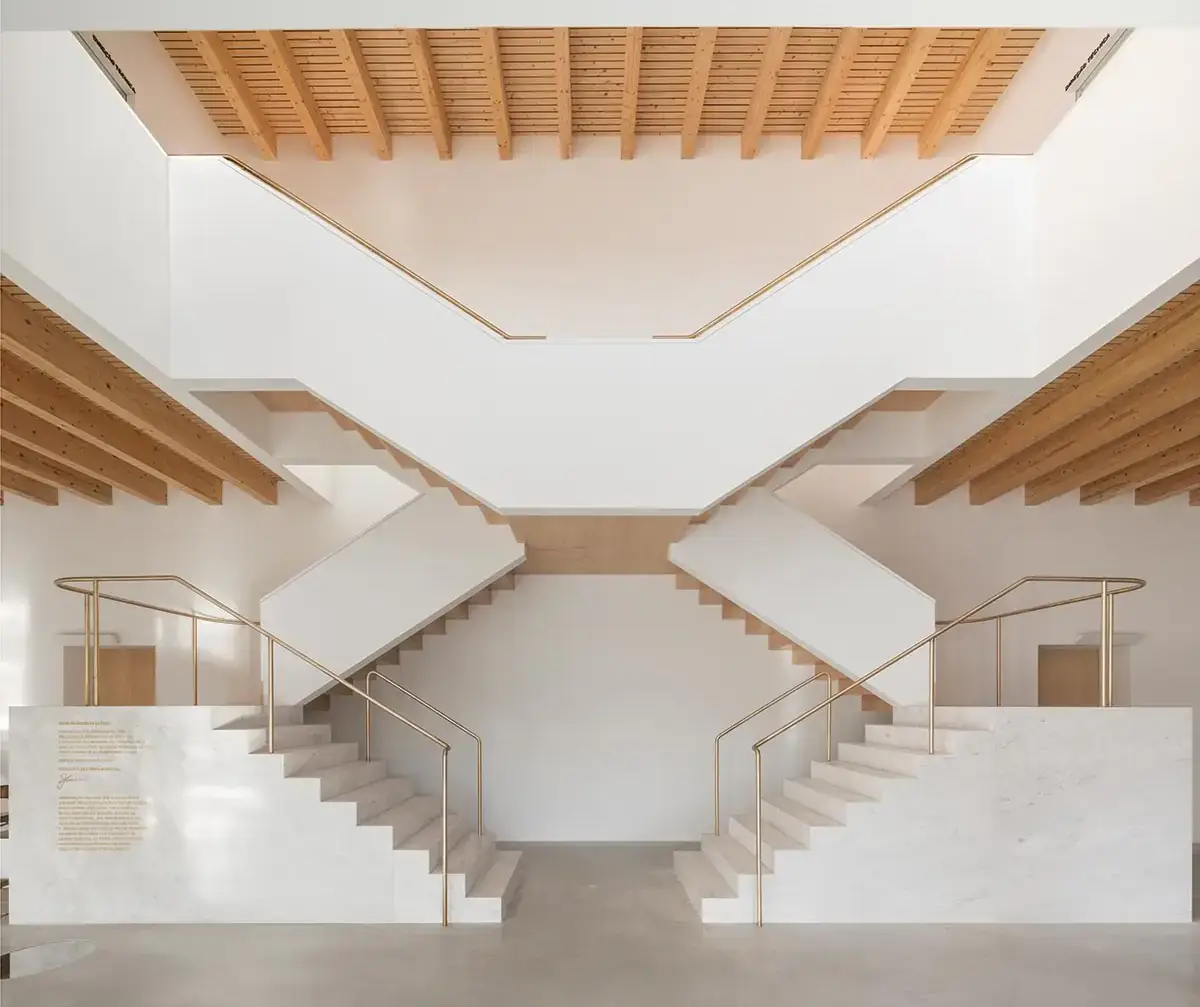
4
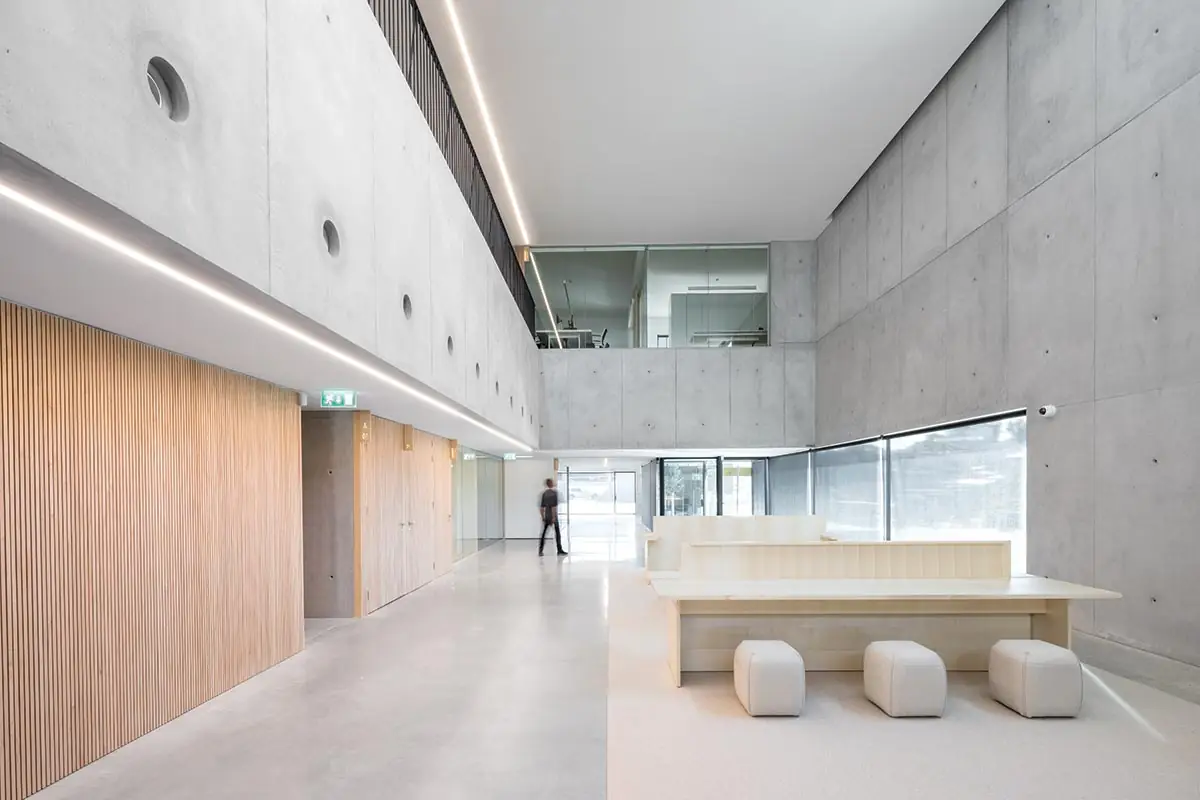
5
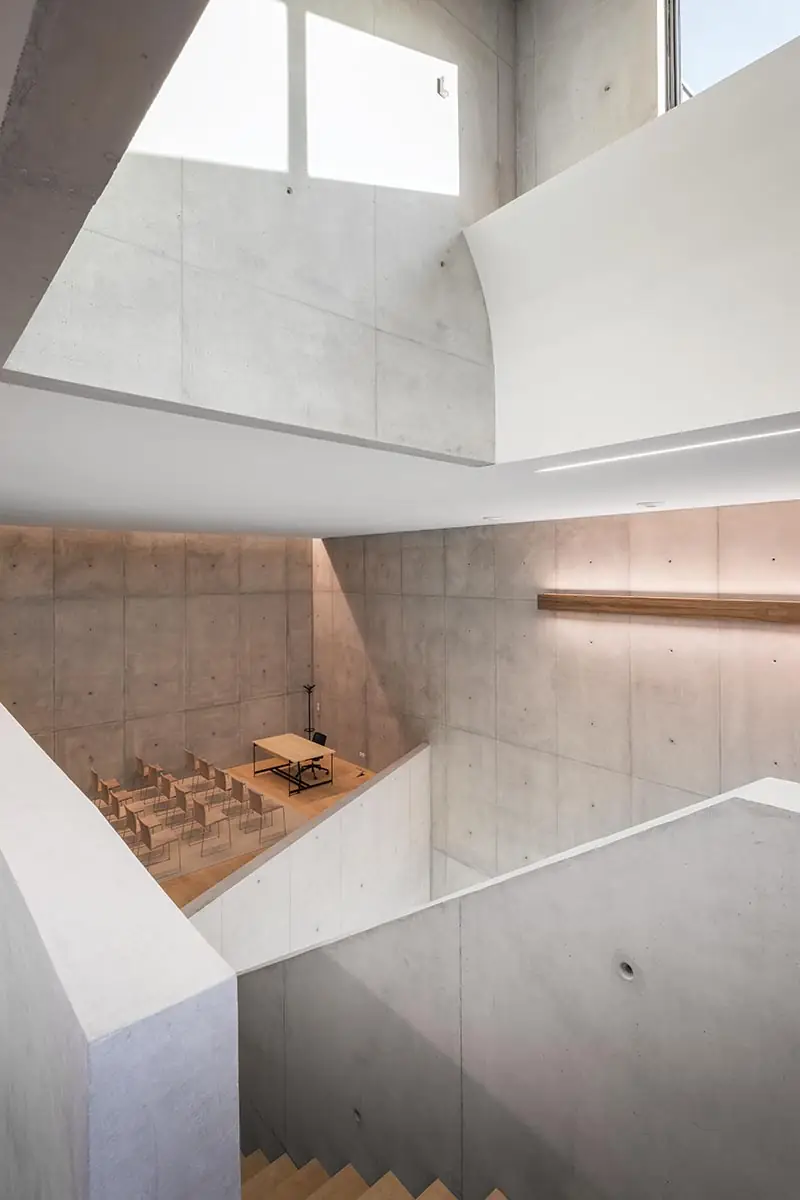
6
Warm timber accents complement expanses of concrete throughout: on the central staircase (4), in waiting areas (5), and in an employee-training room overlooking the south wing (6). Photos © Attilio Fiumarella
Nonetheless, de Oliveira was entranced by the romantic ruins of the former factory building, which, he says, were evocative of a cathedral. “We looked for a landscape within the building and were amazed by the light and the high ceilings, and we thought to maintain that concept in the receiving spaces.” The renovated factory building makes up the core of the new complex, hosting the general assembly hall on the ground floor, offices on the second, and a roomy, light-filled conference room on the third.
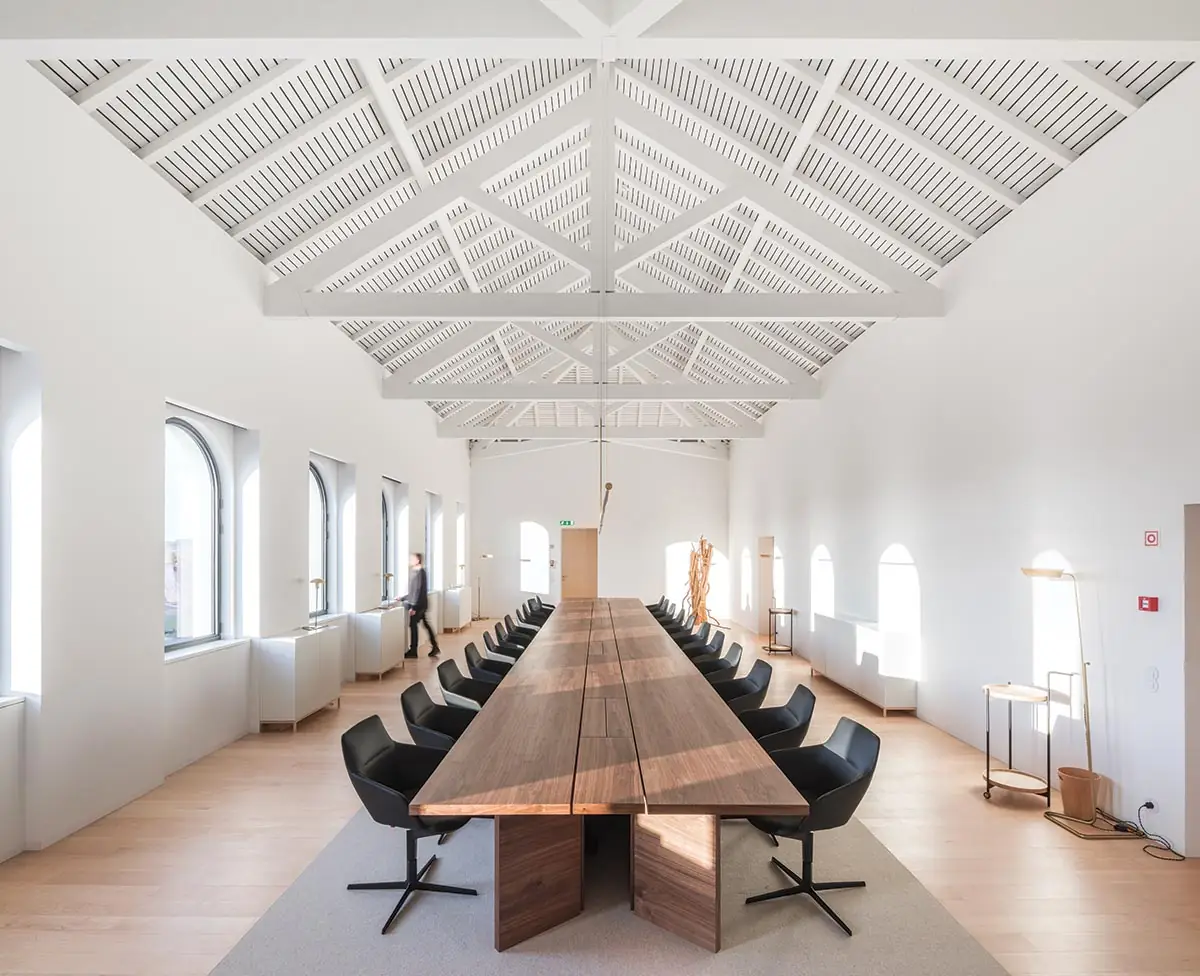
The presidential conference room (this image) is on the top level of the renovated factory building. Photo © Attilio Fiumarella
The public spaces are concentrated along the west elevation on the ground level. Here, civic aspirations are more apparent in the triple-height ceiling that allows one to look upward and into the offices of the city workers above, which are enclosed by glass, so that, de Oliveira says, “the objective of fulfilling the transparency of political power becomes a reality.” Sofas and chairs in the northern wing are provided for visitors waiting to be ushered into the various offices, while the largely unfurnished southern wing can host events and other gatherings. Two employee entrances are on each end of the eastern side of the building, granting access to a hallway that spans its length.
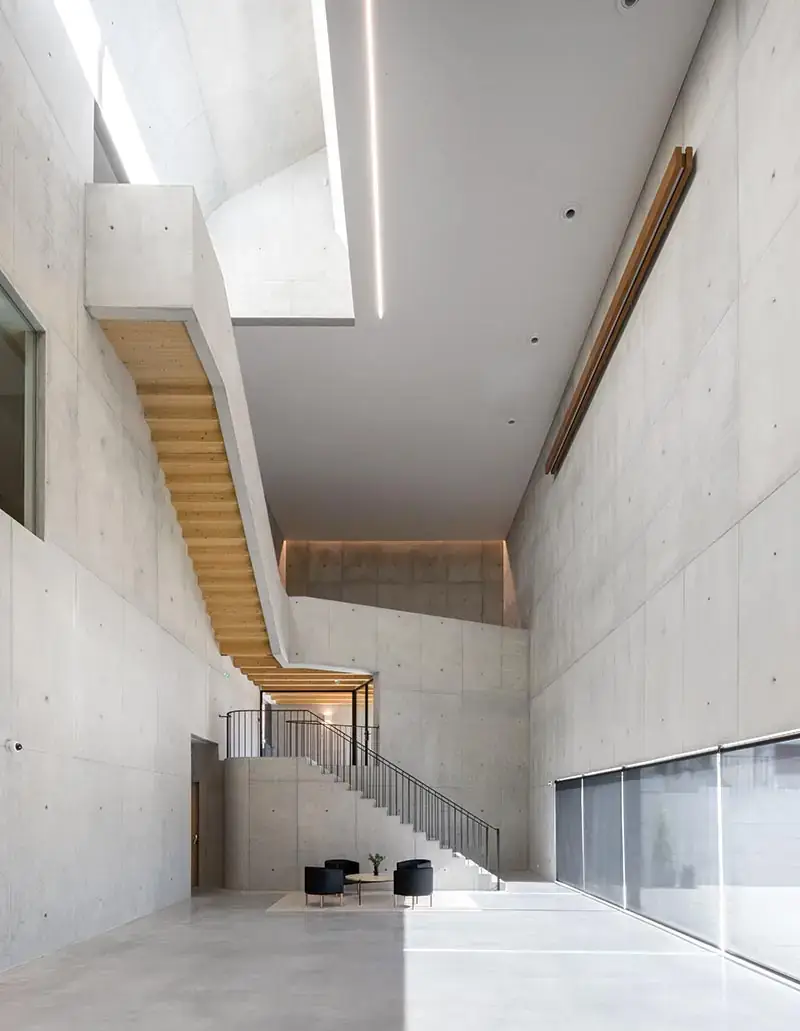
7
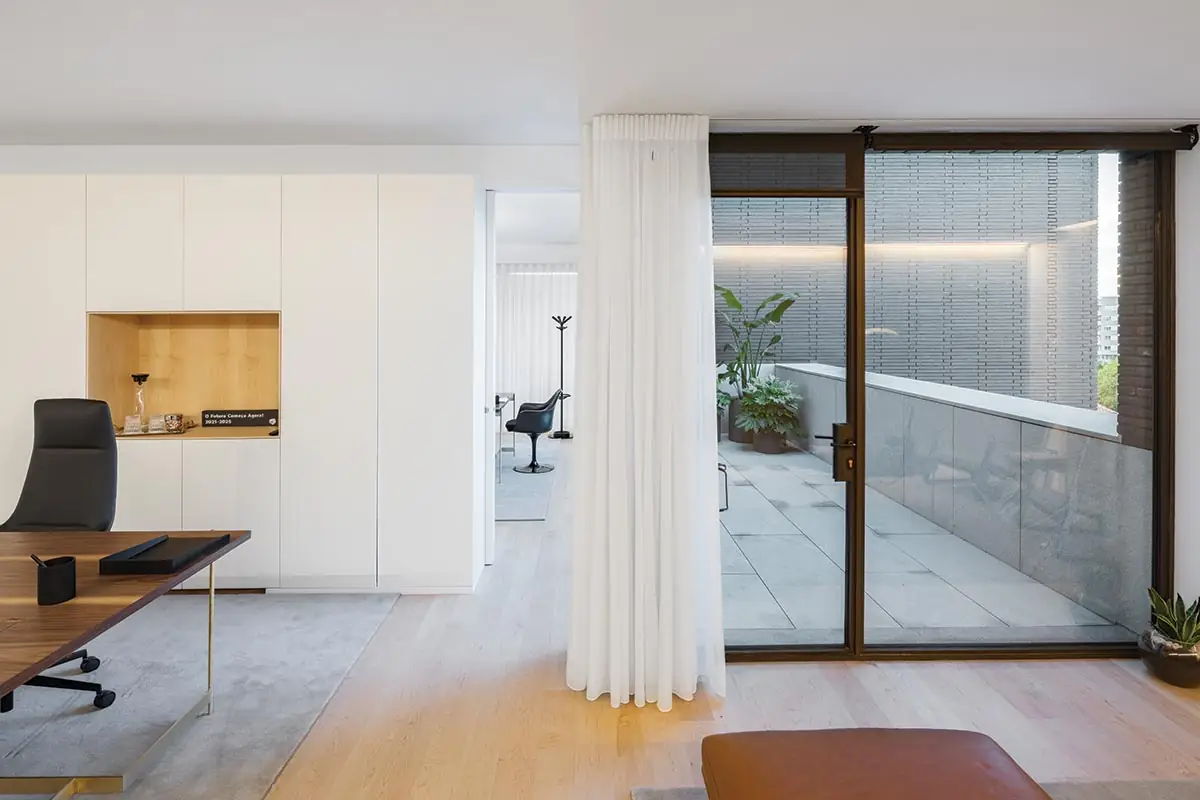
8
A triple-height ceiling in the building’s public halls (7) allows visitors to look up into the offices of city workers above (8), its light scoop expressed on the exterior (top of page). Photos © Attilio Fiumarella
The spatial logic of the building, which houses about 200 civic workers, dictates that departments that require the most direct contact with citizens—taxation, building, press and communications, waste management, and the postal service—are on the ground floor. Located on the second level are offices, meeting rooms, and lounge areas for city planning, strategy and financial management, the legal department, and human resources, with employee access to a west-facing terrace. The top floor is designated for elected officials (including city council members and the mayor) and their support staff. The mayor’s office has its own terrace, tucked between two suspended volumes on the northern facade, which faces the city center and park.
Through a delicate balancing of contrasts, the Câmara Municipal da Trofa manages to both convey a quiet power and carry out its purpose, resulting in a civic building that pays equal respect to those who work there, the public they serve, and its setting. Now NOARQ is turning its attention to the construction of a bridge linking the cities of Porto and Gaia, a commission won in a 2021 competition against larger firms that included Zaha Hadid Architects and Herzog & de Meuron.
Ground floor - Click to enlarge
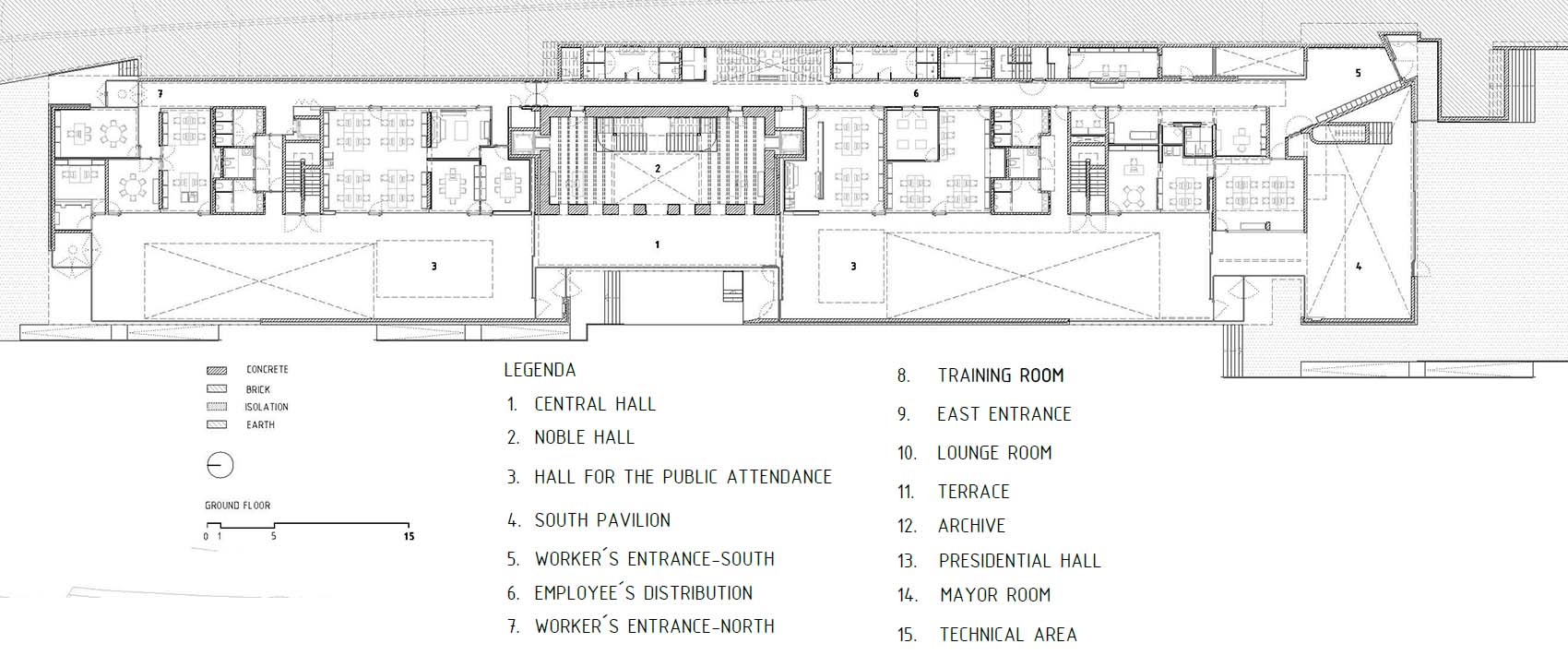
Floor Plan 1 - Click to enlarge
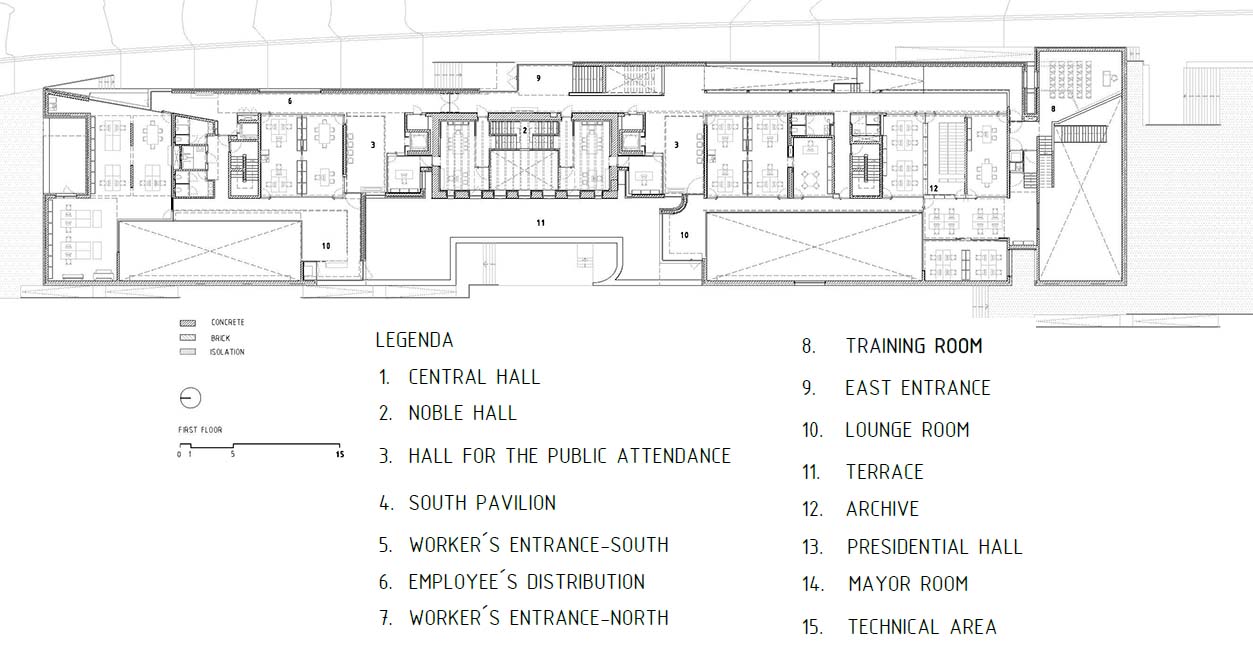
Floor Plan 2 - Click to enlarge
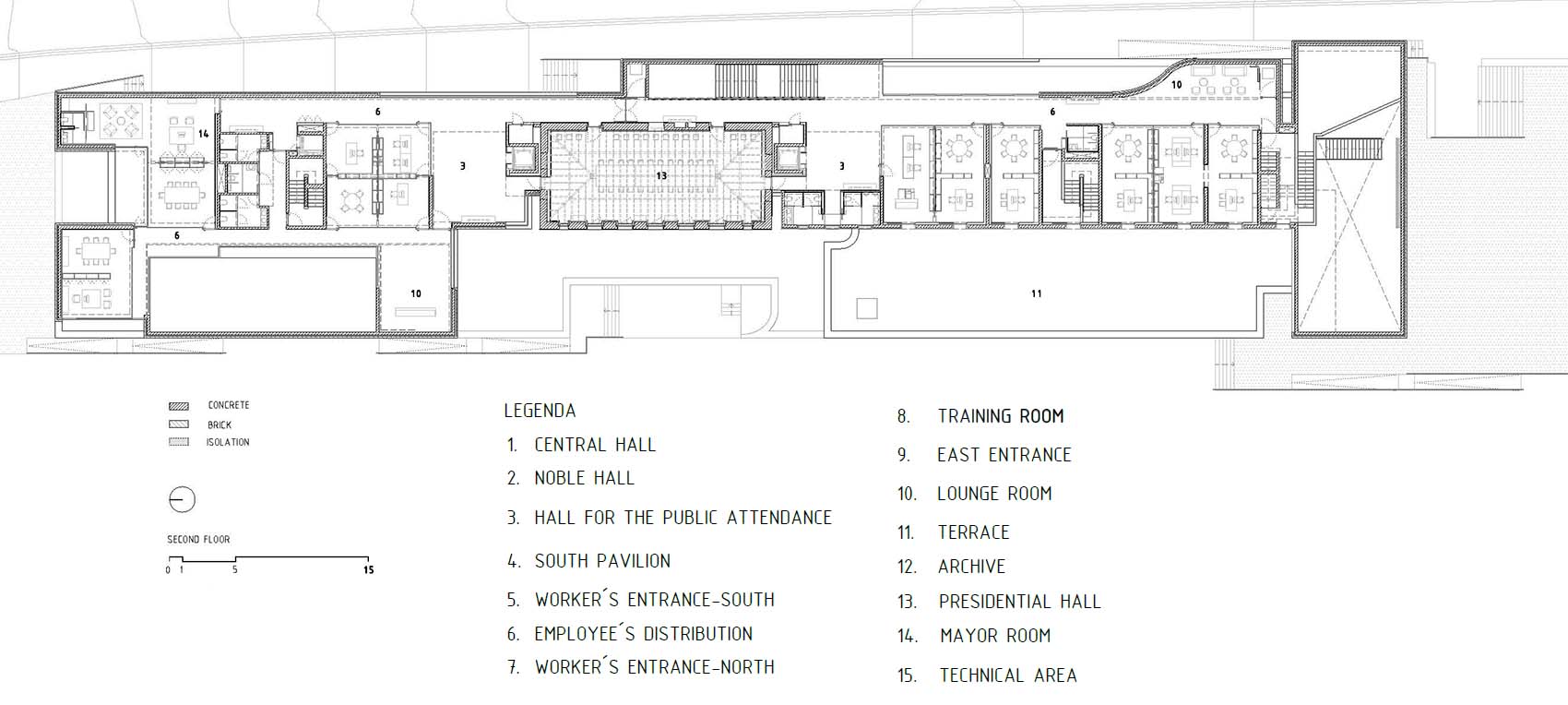
Click graphic to enlarge
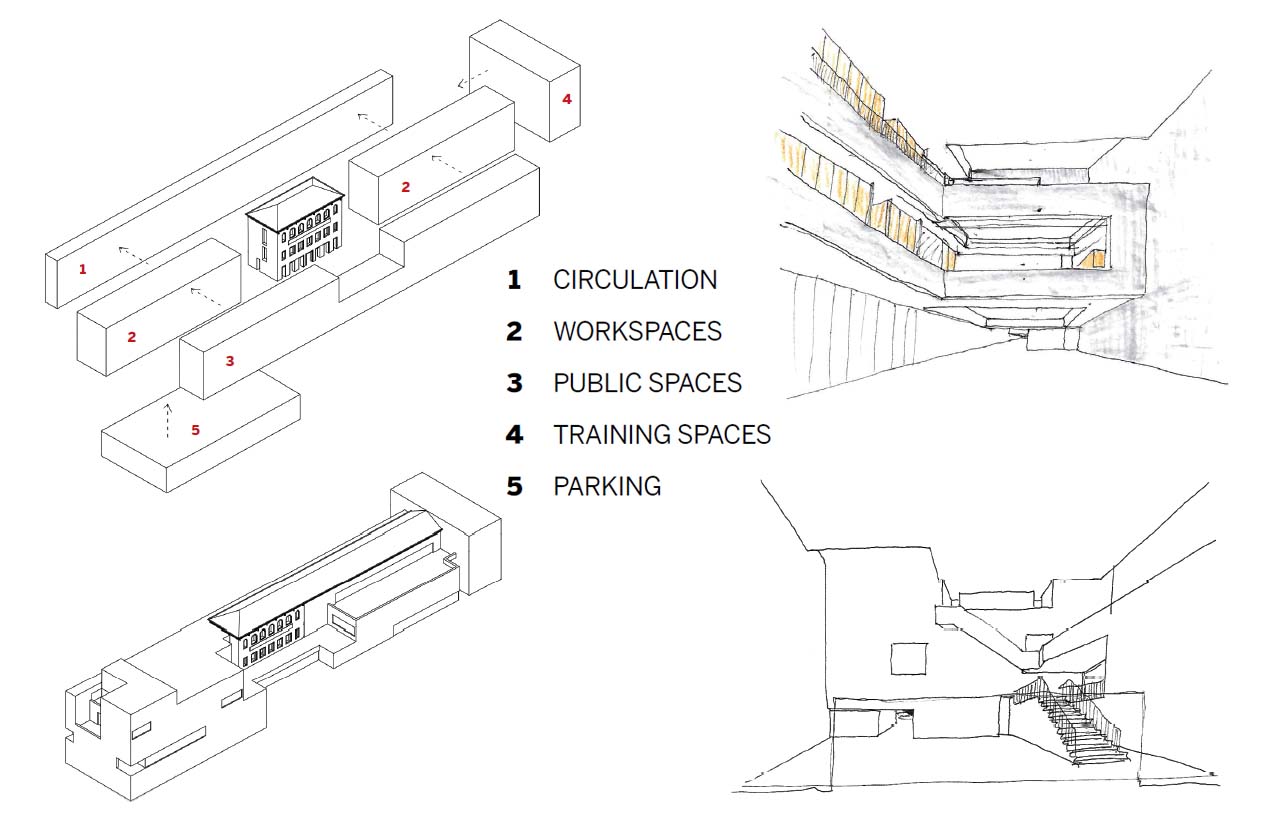
Credits
Architect:
NOARQ — José Carlos Nunes de Oliveira, design lead; André de Oliveira and Gaia Ferraris, project managers
General Contractor:
Telhabel Construções
Client:
Câmara Municipal da Trofa
Size:
67,000 square feet
Cost:
$10.8 million (total); $9.2 million (construction)
Completion Date:
November 2022
Sources
Masonry:
Vale da Gândara (facade brick); Cortartec/Ancon (anchors)
Glass:
Vitrochaves, Saint-Gobain
Hardware:
Assa Abloy
Custom Woodwork:
J&J Teixiera
Wall Coverings:
Forbo
Photovoltaic System:
Pritermica, Astronergy



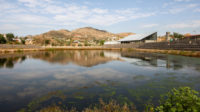
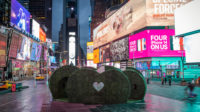
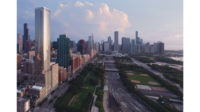
Post a comment to this article
Report Abusive Comment